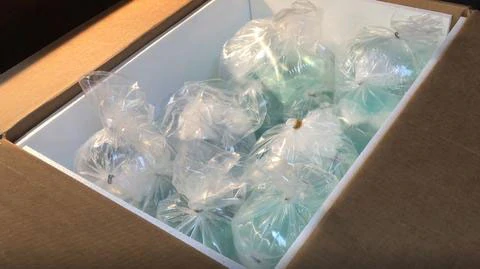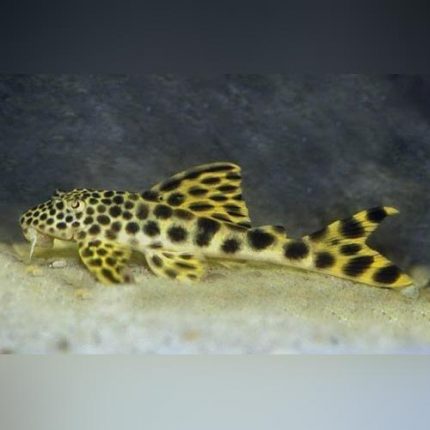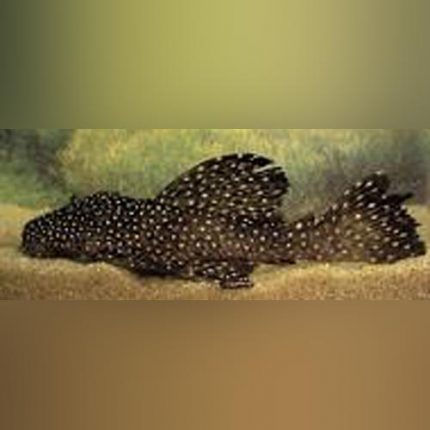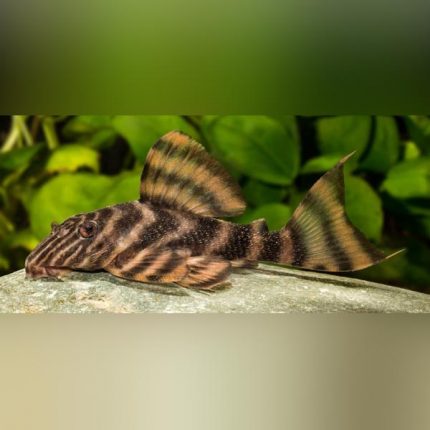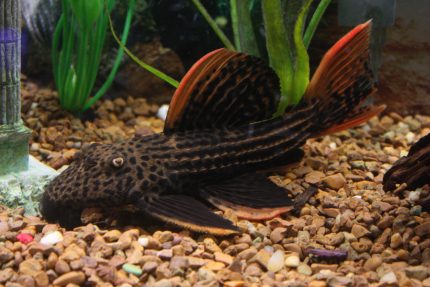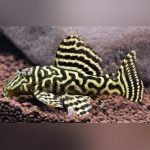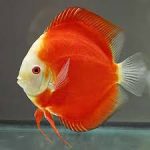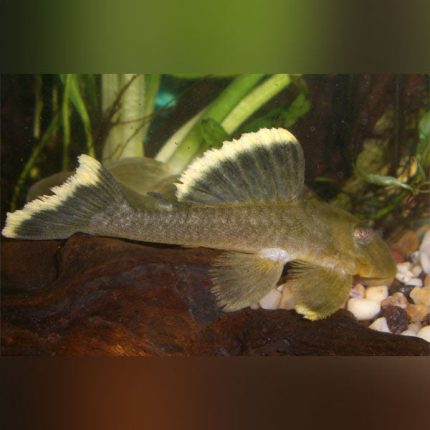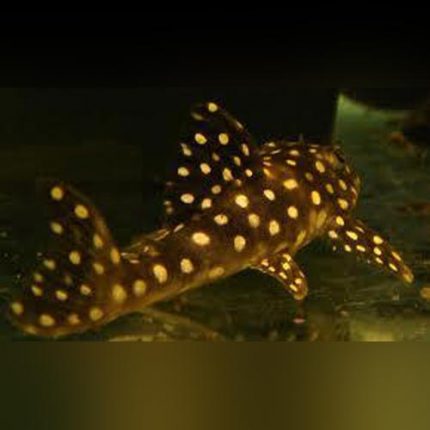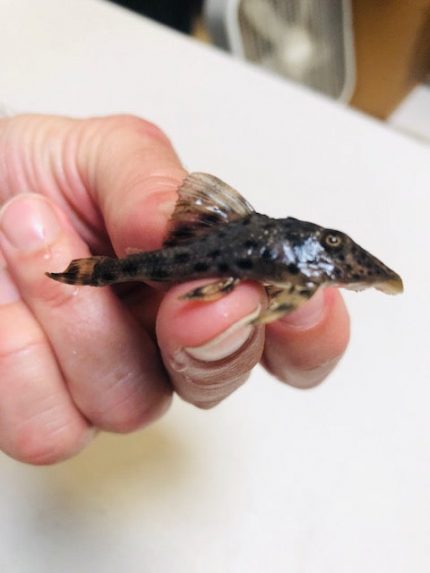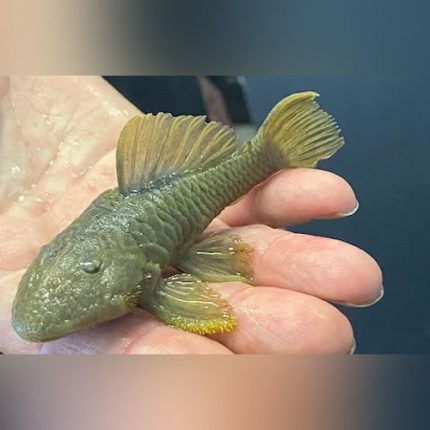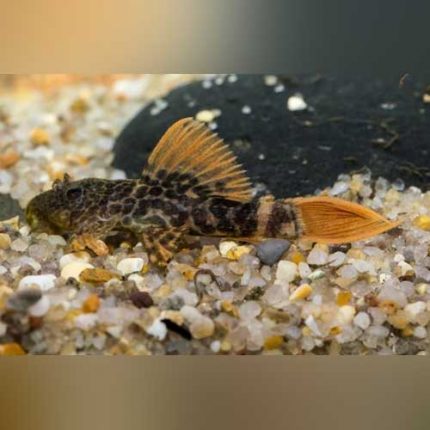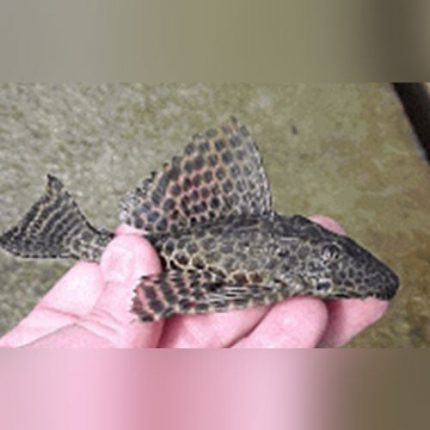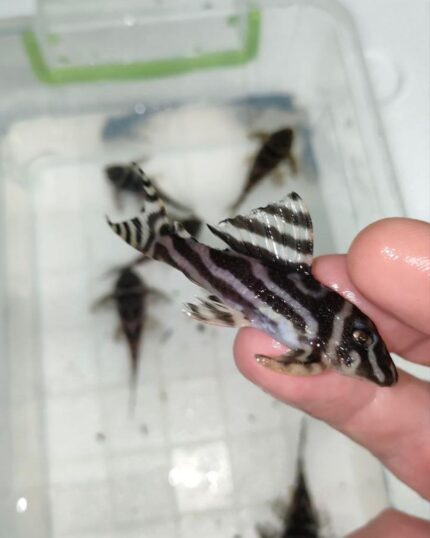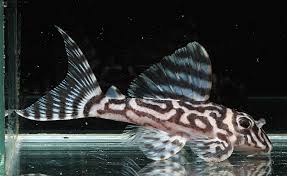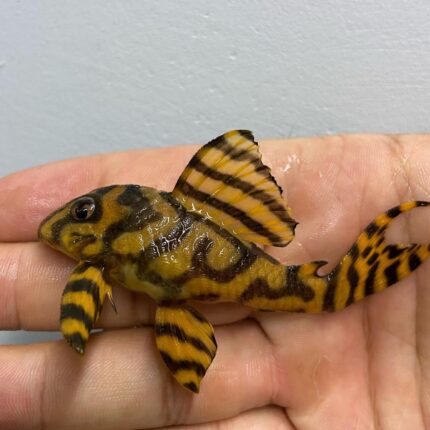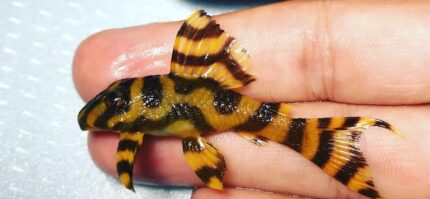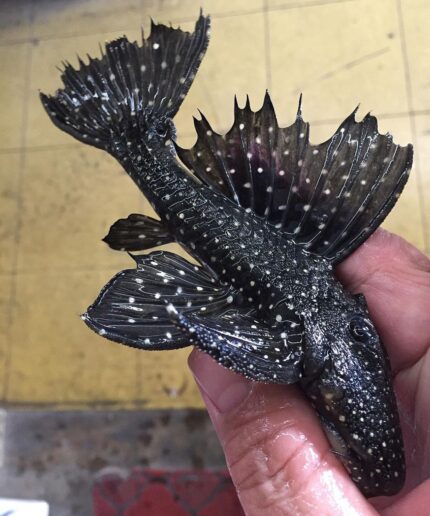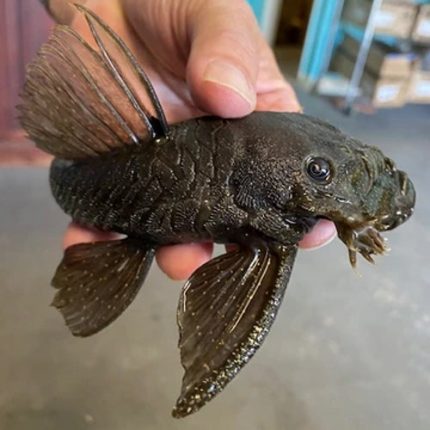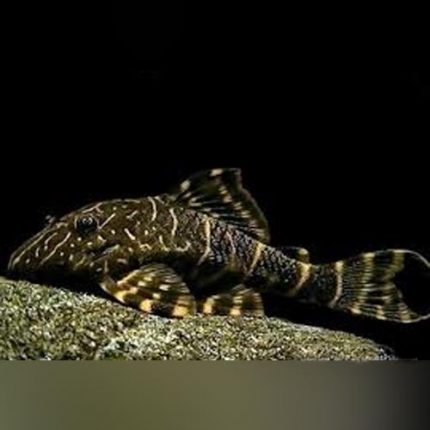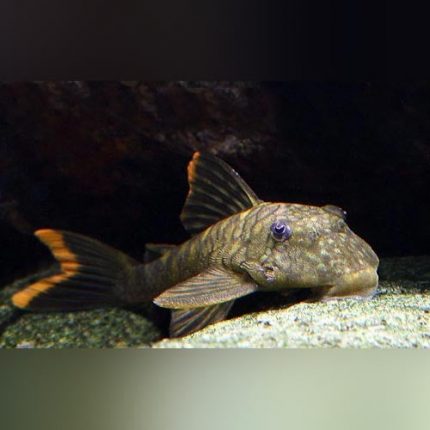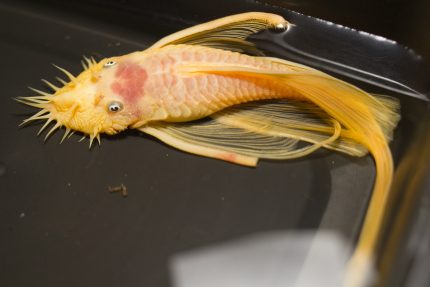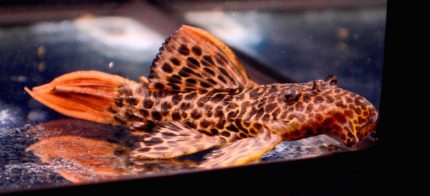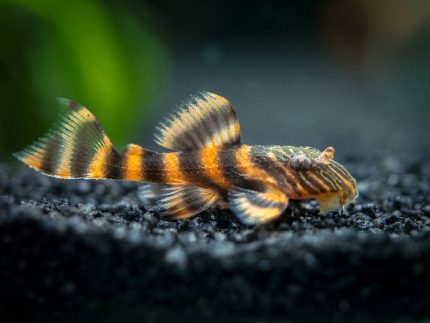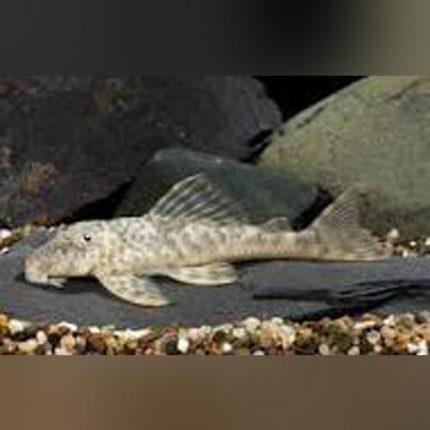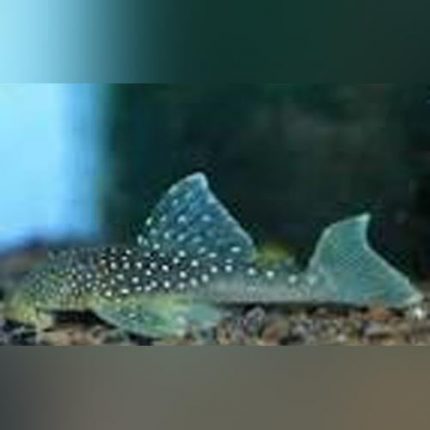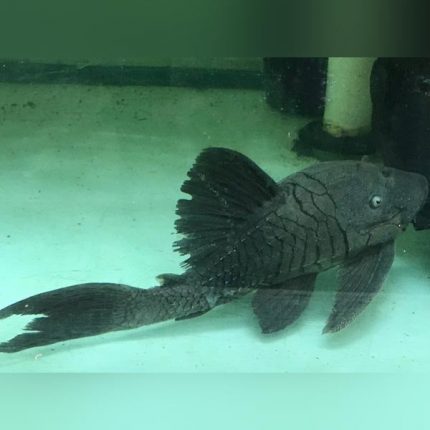This is a beautiful variety of what are called ‘Fancy Pleco-s’. It originates from whitewater sections of the Rio Xingu near the town of Belo Monte (Brazil). Their max size and peaceful nature make them a popular addition to peaceful-community aquariums. Good (oxygen-rich) waterflow and driftwood are a must, while a pebbly substrate and rocky hiding places are highly recommended (to recreate the bottom of a flowing river). King Tigers are considered peaceful community fish, but like most fancy plecos, they can be territorial and aggressive towards conspecifics & other bottom dwellers. Avoid mixing with other pleco-s unless the tank is big enough to establish separate territories (at least 1.5 square feet per pleco, with decorations as dividers). It is more of a carnivore than a herbivore, so be sure to feed a mix of meaty and veggie-based foods; it is a nocturnal feeder, so feed as late as you can.
The first pectoral fin ray of the male is somewhat thicker than that of the female. Males in breeding conditions further develop their spine-like ''odontodes'' on this ray. The male has a slightly broader head than the female, best observed from above.
Unlike the popular opinion of many other loricariids, Hypancistrus species are more carnivores than algae eaters. This is backed up by a small and lightly toothed mouth that indicates it is a poor algae eater. Provide mainly meaty foods such as bloodworm and even brine shrimp.
Hypostomus luteus is a quite spectacular and unusual Pleco. Only in recent years has it become a new sensation in the aquarium hobby, and it's among the most expensive Plecos on the market. It hails from the border region between Brazil and Argentina, which means it should not be kept in too warm water (18-24 C). One of the extraordinary traits of Hypostomus luteus is how it changes its appearance from juvenile to adult; young specimens are dark grey/black with small golden spots and a yellow caudal fin. As they age, they gradually transform into all golden/orange adults. If the temperature requirements are met and enough space and food are given, Hypostomus luteus is a hardy and easy to keep Pleco. It's currently not allowed for export from Brazil, so most individuals are exported from Argentina and Uruguay.
The Longfin Albino Bristlenose Pleco (Ancistrus cf. cirrhosis), also known as the Albino Bushynose or Bushymouth Pleco, is a member of the Loricariidae family of South American suckermouth catfishes. While many suckermouth catfish species have yet to be bred on any major scale in aquariums, the Longfin Bristlenose Pleco is one of the most easily- and often-bred “pleco” species in the aquarium hobby and many popular color morphs, such as this variety, have been developed. This fish is immediately distinguishable by its highly variable pink and yellow marbled pattern as well as the growth of many bristle-like appendages on its facial area beginning in sub-adulthood. Both sexes grow the appendages, but the growth and length is much more pronounced in males.
In recent times, L397 has become increasingly popular in the hobby. This is certainly due to the very striking coloration of juveniles. It's actually a very rare species in the hobby, but due to some successful breeders like Cristoffer Forssander in Sweden, significant numbers of L397 are now on the market. It's a hardy and easy-to-maintain species as long as the wood is provided for their diet

